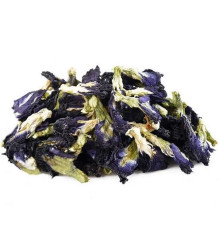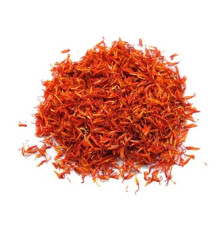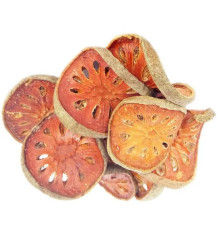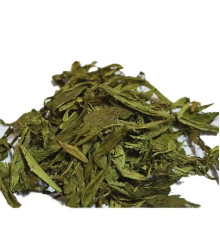







- BrandSamunprai
- Сountry of manufactureThailand
- AvailabilityIn Stock
- Weight0.1 kg
China Rose Hibiscus
Hibiscus sabdariffa, also known as Roselle or Rosella, is a species of plant in the Malvaceae family. Native to West Africa, it is now widely cultivated in many tropical and subtropical regions of the world, including Asia, Central America, and the Caribbean. The plant is grown for its edible calyxes, which are used to make a tart, cranberry-like tea or juice that is consumed hot or cold. The calyxes are also used in cooking, particularly in jams, jellies, sauces, and soups.
In addition to its culinary uses, Hibiscus sabdariffa is also known for its health benefits. It contains a high concentration of antioxidants, including vitamin C, anthocyanins and flavonoids, which help protect the body from free radical damage. Studies have also shown that Hibiscus sabdariffa has a number of health benefits.
Hibiscus tea reduces cholesterol and high blood pressure, aids the immune system, and helps with digestive and inflammatory problems. It reduces the chances of cancer. It increases metabolism which leads to weight loss. Sweet and sour tastes together are known in Ayurvedic medicine to have a calming effect on people experiencing nervous system stress.
Hibiscus sabdariffa has been shown to have hepatoprotective effects, meaning it helps protect the liver from damage caused by toxins. And Hibiscus tea helps promote weight loss by reducing the absorption of carbohydrates and fats.
Hibiscus tea benefits
✅ Lower blood pressure
✅ Reducing inflammation
✅ Supporting liver health
✅ Improve digestion
✅ Weight loss support
How to make hibiscus tea from dried flowers
🫖 Put 1-2 pieces of hibiscus flowers in a cup or glass and pour hot water 80º–100º Celsius (176º–212º Fahrenheit), then cover to keep the heat. Let it steep for a few minutes. The brewed hibiscus tea can be enjoyed warm or over ice. If you prefer it sweet, add sugar or honey.
No questions about this product.




